Presque Isle State Park is the most visited park in Pennsylvania, and to those of us privileged to live nearby, it is no surprise why. The park is a relatively new concept for the peninsula, and I was fascinated to learn a little about its history.
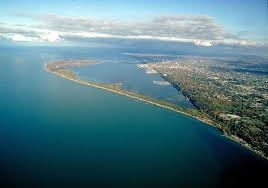
In 1784, the Iroquois nation sold the land, which was included in the “Erie Triangle” to the United States government. It was the harbor, not the peninsula itself that the government was primarily interested in. It was this protected harbor that provided Commodore Oliver Hazard Perry with the security required to build his fleet of ships that defeated the British in September of 1813.
In 1819, the federal government conducted a survey of the property and in 1823, the huge sum of $150 was allotted to improve the entrance to the harbor. Sand was dredged and a channel was built to allow for the ease of the growing lake shipping industry.
Due to the naturally occurring movement of the peninsula towards the east, several breaks eventually occurred separating the base of the land from the mainland. Breaks occurred in 1819, the winter of 1828-29, the winter of 1832-33, and again in 1874. Each time, the land was rebuilt by the government. At one point, willow trees were planted to deter erosion. Unfortunately, this plan proved to be unsuccessful. An idea was even entertained to keep a break in the land so that a navigation channel from the west could be maintained, but that idea was discarded as untenable.
In 1869, the land was deeded to the Marine Hospital in Erie (see blog #18) with the hospital being paid $36,000 from the US Secretary of War. As Federal property, no one could live on the peninsula except the lighthouse keepers and the crew of the life-saving station.
There are two navigation lights on the peninsula. The first one built was the harbor beacon in 1830.
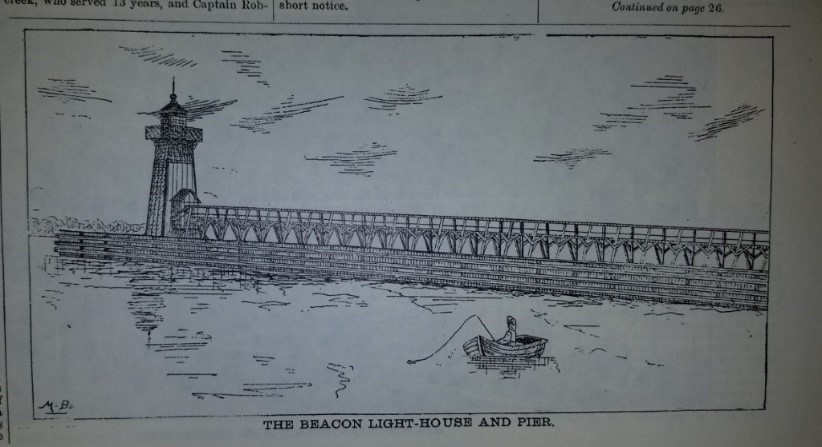
Originally a tall, wood tower with a light fueled by fish oil, it was destroyed when a schooner’s jib boom crashed into it with a strong autumn gale in 1857. It was replaced in 1858 with a 19-ton wrought iron structure made in France and shipped in one piece to Erie. The modern illumination fuel of lard oil was then used.
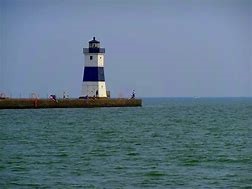
This tower is located on the North Pier, which extends from the peninsula out into the lake. Visitors enjoy fishing from the pier, or simply relaxing by watching boats enter and exit the harbor. Directly across from the North Pier, forming the channel, is the South Pier. My younger son and I biked to the South Pier a few weeks ago and he exclaimed he had never been there before. It’s not only accessible by bike but auto as well and gives a completely different view of the surrounding land and water. The road leading down to it is off the Bayfront Connector and follow the signs for Lampe Marina and Campground.
The Flash Light-House as it used to be known, or Presque Isle Lighthouse as it is known today, was built in 1873 at a cost of $15,000. It included a modern square brick tower with commodious keeper’s dwelling attached. Strangely, throughout the 1800s, the rules of lighthouse service did not allow for keepers past the age of 50 years old. This is perhaps due to the physical nature of maintaining the light.
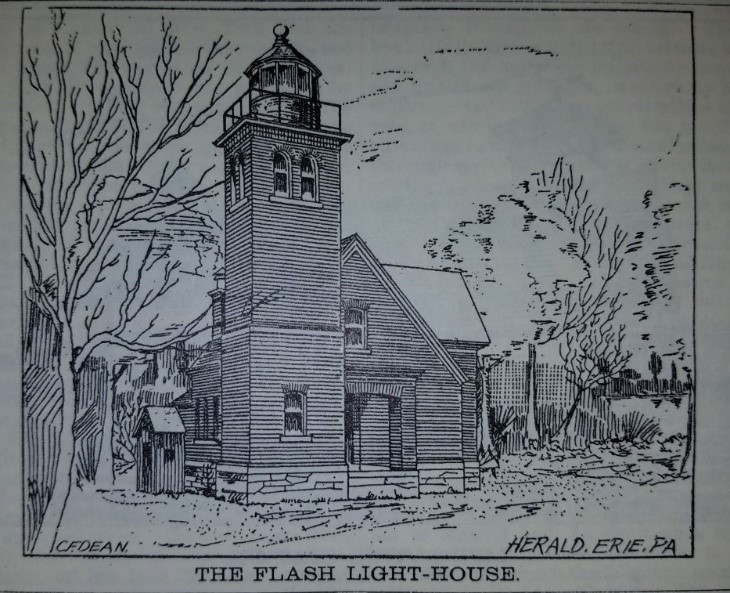
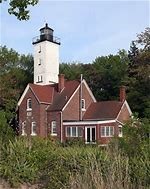
Located on the north shore of Presque Isle, this lighthouse served mariners until 1944, and today, and as it was in 1888, is a picturesque spot for photographers and visitors from around the world.
Originally located on the north shore of Presque Isle, the “US Lifesaving Station” was later moved to the entrance of the harbor where the current Coast Guard station is today. The men were initially volunteers, and in 1876, the Erie station was officially established with the captain receiving an annual salary of $200 and the “surfmen” $40 per month, paying for their own board. At that time, the station was only manned for only 3 autumn months for the worst of the storms. Two years later, due to the storms on the lake and the number of lives saved by the station, the captain’s salary was raised to $700 a year and the surfmen’s pay to $50 a month. The station was kept in commission 9 months out of the year. A constant lookout was undertaken day and night for those in need of assistance. Those who worked there proved heroic in saving the lives of many throughout its service and we are indebted to the men and women who work at the modern Coast Guard Station today.
What began as an emphasis on a protected harbor for shipping for the growing manufacturing sector of Erie in the late 1800s and early 1900s evolved into an emphasis on the land of the peninsula itself. In 1921, Presque Isle became a State Park. With its 3,200 acres of land, 13 miles of roads, 21 miles of recreational trails, 13 beaches and 500 boat slips in its marina, there is something there for everyone. My happiness certainly is increased every time I walk, bike or just sit on the beach admiring the beauty surrounding me.


There are two nonprofits who work on the peninsula and make the park even more interesting to visit: the Presque Isle Lighthouse, and the Presque Isle Partnership offer activities during normal summer conditions. Unfortunately, due to the pandemic, tours of the Lighthouse and programming with the Partnership have been curtailed. Please visit presqueislelighthouse.org and discoverpi.com for information on these organizations and become a member if you would like to support their worthwhile projects.
